Today we conclude this three part travelogue of a brief trip to India, looking at some environmental portraits and architectural silhouettes. Before we get started, if you are listening to this soon after it’s release, it may well be Christmas Day, so Happy Christmas! If you’re catching up later, I hope you had, a very Happy Christmas, and wish you a wonderful New Year.
So, we left off last week having looked at the pictures of the Taj Mahal. I spoke about some history of the place as well as some technical mistakes I’d made during my shooting due to lack of sleep, which might also lead me to believe that I don’t yet know that particular piece of equipment like the back of my hand. If I did, I would still have been able to use it while effectively on auto-pilot. During the last 45 minutes or so in the Taj complex the guide went back to the gate where I’d got my first glimpse of the mausoleum made of white marble that is the symbolic centre of the complex and what most people think of as the Taj Mahal. I should just mention that having a guide was great to get some history of the place while wandering around, but I’d say it’s not 100% necessary if you are only going to be visiting the Taj Mahal.
I’d requested a guide because my original plan was to arrive at the Taj before dawn and shoot for a few hours, then leave the complex, to go back to the hotel and get breakfast, then check out and do some street photography in the area during the day, then come back to the Taj as the sun dropped in the sky leading up to sunset, and shoot a little more during this warm light and as the sun went down. Well, as I said before, the travel time over here was not two hours as I had heard, but 5 hours, so I was incredibly tired having had just 90 minutes disturbed sleep, and I also now had to leave the area much earlier in the day to have time to get back to Delhi airport for the evening flight out of India. So the guide was not as useful as I’d original expected. Having said that, I’ll give a few details of how this guide thing works, for the sake of those of you that may have a chance to make it over here some day. Firstly, note that the car I was riding in was booked in advance and has a driver. If you want to travel by car in India, I do not recommend getting a renta-car and driving yourself. Driving in India is a skill that although not impossible to master, which is pretty obvious because millions of Indian people are doing it every day, but it is very different to any other country that I’ve visited. The lane markings carry very little importance apparently. A two lane road will frequently be used by three or four cars side by side, depending on the size of the lanes, and when travelling at any speed outside of the cities, many of the drivers just meander between the lanes as they feel fit. The odd cow walking towards you in the opposite direction is a strange site at first, and trucks and cars tend to use the opposite side of the road to get to their destination sometimes as well. So basically if you’re in thick traffic, it’s incredibly thick, and carries the risk of being bumped or bumping into someone else with every manoeuvre, and when you are travelling at a decent speed, there’s the risk of being knocked off the road by someone changing lane without any thought of anyone else on the road, or being hit head on by a large truck or cattle coming in the opposite direction on your side of the road. This is really not doing this experience justice though. I actually really enjoy it in a strange kind of way, so I don’t want to put you off at all. But I just want to say, get a driver with your renta-car. Without trying to put anyone down in any way, it is just a hundred dollars or so a day for a car with a driver, and they are professionals, and more importantly they’re Indian, which means they’re used to it. One thing to note and this information is from Indian friends, so you can trust me, a generous tip for a driver that has stayed with you for a day or so would be around 500 rupees, which is about $15. Some Indian people have told me this is too much. They say that it will spoil the driver and make them expect more in future, so you could go with around 300 or 400 rupees, but I myself think that 500 is although a touch on the generous side, a nice thank you.
Now, the important thing though, and I must say I’ve not overcome this issue myself yet, is to try and get a driver that speaks good English. I did not book this driver directly myself, and I don’t know if this was requested, but the driver on my trip this time did not speak very good English. Another thing that I will bear in mind for future trips as well, and again, I’m not confident that this will be possible, but if you are not going to have a separate guide, it would be great if there was some way to find people that understand the needs of a photographer shooting in India. Later in the day on my way back to Delhi, I asked the driver if we could stop in some crowded market areas to take some photos, and he basically said it was not a good idea. Now because of his bad English, I don’t know if he’d understood my question, and seriously thought it was not a good idea, or if he had simply not understood my question. I was far too tired to argue though, and spend most of the five hour drive back gaping out of the window in a haze, or totally asleep. But getting someone with good English and that can stop in areas of interest and then maybe get out of the car and walk with you, will be a big help.
Moving on to the guide, the guides for the Taj Mahal do not get a wage. They used to be paid by the renta-car company, but booking and payment problems caused them to decide as a group that they would no longer be booked or paid by the renta-car company. Now, the driver calls a guide from a list of numbers he has, usually on the day, so our guy got a call at 4:30AM, and then the guides come out to work with you. They don’t get paid, but I went to great length to find out from the guide what a fair amount to pay him would be. Now, this guy is only human and is possibly, actually probably inflating the amount to an extent. He told me that people who do not enjoy the tour will pay just $15 dollars or so, which as I said earlier is 500 rupees. But people who really found the tour and the history etc. interesting, would give him $25, $30 or $40 dollars, which is between 850 and 1,400 rupees. The latter seems excessive by India standards, and I doubt that this is what you should pay, but if you are really happy with the service and information you receive, when you consider how much you are probably earning in your own country, and how much you spent getting out here, it might be a good guideline. This is for each member of the party by the way. So if you are in a group, each member would pay what they feel comfortable with and not just chip in a few rupees each to make a thousand say. The more of you in the group, the harder the guide has to work, so I think this is only fair.
Anyway, let’s move on to what happened after I’d returned to the hotel for breakfast before parting with the guide, and then I’ll tell you how much I gave him. So once I’d eaten and checked out of the hotel, the guide asked if I’d like to see some traditional marble craftsmen, inlaying semi-precious stones into the marble, in the same way as some that can be seen in the 1185 of the archway on the front of the mausoleum at the Taj. This sounded like a great opportunity to get some environmental portraits, so I jumped at the chance. He also said we could look at some sapphire cutting and carpet weaving workshops. All trade and products that the area of Agra is famous for. First, we arrived at the marble inlaying workshop and this is where I shot the first three images we’ll look at today. The first of which is number 1193. This is not a favourite shot of mine from the trip. I’ve really included it so that we can see the round plate like marble in to which the craftsman is carving hollows into which the stones will be inlaid. This guy proudly showed me how resting his finger on the marble as a fulcrum for the carving movement is gradually wearing his finger and fingernail away. The problem with this image and the BKSecret, long term member and contributor at the Web site points out in his comment, the guy is looking into thin air. I shot around 8 frames of this guy, some showing his finger and most just working, and in all of them, he’s looking into thin air. This was actually to the point that I wondered if perhaps he had an eyesight problem, but had he not been able to see, I’m sure they would have made a point of how miraculous it was that he could do this job without his eyesight. I had been shooting him at F4, again with the 50mm F1.4 lens, but I closed the aperture down a little to F5.6 for this shot as I was going to focus on his finger, and wanted to get his face more in focus than F4 would have allowed. I’d raised the ISO to 400, as I was indoors but shooting with available light. This gave me a shutter speed of 1/25th of a second.
To his right was another craftsman, grinding the semi-precious stones that would be inlaid into the marble that the first guy was carving notches into. We can get an idea of the sort of thing they are making if we look at the octagonal table top leaning against the wall behind the subject in image number 1194. This time I went back to F4 and focused on the subjects eyes, because I wanted to capture that pensive look on his face as he ground this tiny piece of stone. I didn’t think we need to see the hand clearly in focus for this shot, as we get enough information without it being, and I didn’t want to get the background any more in focus than this either. It was pretty much a coincidence that the table behind the subject was creating kind of a halo around his head. This was not intentional, but I thought it was kind of cool when I looked at the shot later. Note again that as with the first two portrait shots we looked at in part one of this series, I dropped the saturation back down to normal for these portrait shots so as not to overdo the skin tones and this guys yellow sweater also was way too loud with my normal Velvia type settings. The extra stop of aperture had slightly more than doubled the shutter speed for this image to 1/60th of a second, again at ISO 400.
After this, I was lead through a door at the back of the workshop, and this is where they try to sell you their wares. This is also where I warn you about this kind of establishment. The first thing I heard on going through to the showroom is that there is no obligation to buy anything. Then I got a nice display of how Coca Cola will not damage the marble tables even if left on for 24 hours, and then watched it quickly wiped off in about 24 seconds. It’s also where I was told that the table tops could be shipped to anywhere in the world. This is where I made my first stance in saying that I didn’t want a table top, and was rebuffed another explanation that there is no obligation and that I was to just enjoy looking at their goods. As we went through the showing, saying no to everything, the size of the wares got smaller and smaller, and the price got lower and lower. They start off trying to sell you something that you would need a second mortgage for, and they finish up with a grumpy look on their face as they show you $200 ring case. They also apparently have a magic ball or some kind of divining system that will accurately tell you the taste of every man in the worlds wife.
Now, I’m being a little sarcastic here, but I’m English, which means sarcism is in my blood, so please forgive me, but I want to impress on you, that they will give you a very, very hard sell. I was getting pretty frustrated, and told the owner of the establishment that he had no way of knowing that my wife was going to love the ring box that he held in his hand, swearing that she would. He moved on to show me another ring box and said, this one is even cheaper. It was at this point where I was very close to snapping and said that it was not the price. I simply could not see anything that my wife would like. I asked for him to shut up while I looked to see if there actually was something that I wanted to buy for her, because I know her, and he doesn’t. As I looked around further, I actually did find a small box that was not overly ornamental, and figured that it would make a nice gift, and that there was a good chance my wife would like it. Because I was now pretty annoyed with the shop owner, I told him I’d buy it for a price much lower than the one on the piece, and he went for it without hesitation. Now frustrated for not saying an even lower price, I paid the money and left the showroom.
As I came out, the guy in the yellow shirt from the last shot had been replaced by another guy in a yellow shirt, who we can see in image number 1195. This time, rather than looking extremely pensively at his work, the young man stared right at the camera for a number of seconds. This allowed me to get a relatively nice portrait with his big eyes staring right back at me. There was now another guy sitting behind him to the right, so I had to come around to the front more, but I kind of like this angle too, and it accentuates the grinding wheel and the stick used to drive it as they are closer to the camera and therefore more out of focus at F4, which is the aperture I was still shooting at. I gave each of these guys 20 rupees each at this point for posing for me. Note that in the street, I would probably not do this. I find it can be insulting to offer small payments for shots, and prefer to buy something from the person I’m shooting if they are selling something. For example the last time I visited India and shot some young boys with who was probably their Dad at a banana stall, and I bought a few bananas from them. This sort of thing is much better I think, and keeps their pride intact.
Thinking about it, I was reminded of this during the walk out from the Taj earlier in the day. A small boy selling post-cards was dogging me all the way out of the complex. He was asking for 100 rupees for his post cards. Now, I never buy post cards. Most of the time, I’ve just shot a bunch of images that I will use to remember the experience, so I simply don’t need them. So I made the mistake of saying, “Look, I don’t want your post cards, but here’s 20 rupees”. The point I was making was get out of my hair. With this though, the young boy pulled a face, looking as though he’d been insulted and shook his head. I realized that I had indeed insulted him. I’d made a mistake that I try very hard not to do in life, and that is to make a decision to do something based on my own set of values and cultural background. This was not some whippersnapper from England or Japan, who would have been selling these for some pocket money to buy some sweets or a toy. This was a young businessman, with pride in his wares, and probably with a responsibility to take home a certain amount of money to help his family eat. I’d hurt his feelings and insulted him by offering him money, and I felt bad, and regretted doing so. Following a profound moment of realization though, I still didn’t need his post cards, so told him again told him “no” and continued to walk back to the electric car to take us back to the car.
After the inlaid marble workshop and shop, the guide took us to a jewel shop. Then he asked if we wanted to go to a carpet shop. I was now fed-up with people trying to sell me stuff, and I knew for a fact that I did not want a carpet, so I refused. One more piece of advice based on this is that these guides seem to be tied up with a number of shops and will try to take you around a number of them. If you don’t want to buy anything, or don’t want to spend the time looking, just refuse from the start. I didn’t realise what was going on at first, as I’d heard that we were going to visit a craftsman’s workshop. I was excited about this from a photography perspective, but I don’t like the pressure to buy stuff that I don’t want. I’m sure it would have been put me in an uncomfortable situation to get out of there without buying something had I not found something I thought my wife would appreciate, so unless you are prepared to put your foot down and get past the hard sell, I suggest you just don’t visit.
So, as I said, the original plan was to do some street photography here, but it turns out that Agra doesn’t really have a market area like most towns. At least that’s what the guide told me and a drive around in the car seemed to reinforce this. As it was going to take five hours to get back to Delhi and it was almost lunch time, I decided to let the guide go and head back. I paid him 1,000 rupees for his services. I know from what he’d told me earlier that he probably expected more. I based this price on a number of things. Firstly, he’d gotten up really early to get to the hotel at 5:40AM, and he’d been very patient and helpful as I was shooting in the Taj Mahal complex. I was grateful for both of these things. However, he didn’t help to find any good areas that I might be able to do some street photography, and actually just seemed to be leading me away from this as a possible way to spend some time. I was also not happy at the way he wanted to take me to all of the shops to buy things. Although I was relatively happy at the two place I did visit, and I got some nice portraits from one of them, I felt as though I was being railroaded a little here, and this made me feel uncomfortable, so I thought I’d pay him a good price, but not overly generous.
So we started the drive back to Delhi, and as we made progress, I was having difficulty keeping my eyes open. I decided to head back early so that we could stop off at a few places of interest on the way, and I also wanted to stop the car and shoot in some market places at some point. The fatigue from lack of sleep was really getting to me though, and I remember seeing a few places that would have been interesting to shoot had I been fresh and awake, but I really just couldn’t get serious about doing this in my current state. A few hours into the drive, and I noticed the driver was definitely getting tired and feared he would fall asleep at the wheel. I told him we could stop for a break at any time, and he seemed to understand and agree, but he pushed on for another hour or so, then he stopped at a road side eatery for lunch at around 2:30PM. It is customary for the driver to eat alone at these sort of places, but I asked him if he’d like to eat with me, and he accepted. I ordered some chicken curry and nan, with some rice, and he ordered some dahl. It was nice just to sit in the warm afternoon and look around at the people passing by. About the time I’d stopped eating and was thinking of going back to the car, a camel train trundled past, so I grabbed my camera and got a few shots.
One of them that I’d like to look at here is image number 1197. Here we can see the camel pulling a large cart with a white canvas covering the load. I don’t know what is under the canvas, but I figured it was some kind of crop or maybe wool or something. In this shot I was lucky to get the camel framed in its entirety and the man sitting driving the cart is in very typical dress, the white robes that you see a lot in India. I zoomed in to 120mm with my 70-200, as I was not so interested in getting the load in. I was more interested in portraying the man large enough to almost be an environmental portrait, but also include the camel totally. This seemed to be about the best composition to achieve this. As they were walking past though, I had to be pretty quick in my thinking. One regret is that I wished I’d opened up the aperture a stop to F4, instead of the F5.6 that I did shoot this at. I was shooting at ISO 400 and getting a shutter speed of 1/500th of a second, so I didn’t need the extra stop for a faster shutter speed, but F4 would have helped to take the background a little further out of focus to allow us to concentrate more on the camel and the driver. Still, I quite like this shot though. The man is large enough in the frame to be able to make out his expression as he looks back at me photographing him. For added interest, I was lucky to actually have the camel turn its head and send a glance my way too.
After this we continued the drive towards Delhi. Having gotten a few hours of broken sleep to this point, I’d asked the driver at lunch if we could stop at some market that we might drive through. Now, I still don’t know if he fully understood me, which is one of the reasons that I say you should try to find a driver that speaks good English, but he didn’t look very happy at this question. I asked if he thought this was a bad idea, and he said yes. The guide had also told me if I go shooting in a market place, I should be careful of my camera equipment and keep my wallet safe. I decided to take the drivers advice for now, but intended to ask him to stop anyway if I saw something I really wanted to shoot. The reality is that once I got back in the car, I really couldn’t stay awake long enough to keep my eyes open for a market place or anything else of interest. I regret this the most from the trip. If I’d known it was going to take 5 hours to drive out to Agra, I think I would have extended the trip by a day, and stayed in Delhi on Friday night, then set off on Saturday morning to arrive early in the afternoon and shot the Taj Mahal on Saturday afternoon until the sun set. Then I would have gone back to the hotel, probably nice and tired from the travelling and shooting, and got a great nights sleep on Saturday. Then I could have gotten up all fresh early on Sunday morning, and shot the dawn shots that I did get, and make my way back to Delhi with enough energy to keep my eyes open to find places to do some street photography. This coupled with spending the necessary amount of time to at least try and get a driver that speaks good English and understands the desire of a photographer to stop in various places would have made for a much more satisfactory excursion.
As it was, I visited one more place just outside of Delhi, in a town called Mehrauli. We’ll take a look at two more images from this trip before closing. Both of which were shot at the Qutub complex, and the first is image number 1198. When I arrived here at just before 5PM the sky was starting to warm up as the sun went down, and it was around this time that I shot this domed roof through the ruins. It’s a relatively simple shot, but quite effective I think. I was lucky to have a couple of birds sitting on top of the ruins for added interest, but the dome and the orange sky are the key elements. To the left of this the ruins actually fall off abruptly, so framing here was important. I didn’t want light to appear along the left side, keeping the only light in the bottom of the frame coming through the archway. I compensated the exposure to the tune of minus one stop to make sure the sky stayed warm and the ruins almost a silhouette. The aperture was F11 so that the dome would be almost in focus and this gave me a shutter speed of 1/250th of a second at ISO 400.
I actually at this point didn’t think the sky was going to get any more colourful, so stopped shooting and took a minute to call home and tell my missus that I was almost back to Delhi and everything was fine, apart from the fact that I was just really tired. As I spoke for a few minutes, the sky did start to become an even richer orange, and the cloud formation was pretty nice too, so I cut the call short to shoot image number 1199. For this I used the 24mm TS-E lens, this time using it correctly, as I’d had my moment of embarrassed realization in the car already, and I was able to correct the perspective for the large tower known as Qutub Minar that we can see almost in the centre of the frame here. Apart from correcting the perspective some, there’s not really a lot to say about this image other than that I paid attention to the where the dome and ruins came in the frame in relation to the foreground trees, all of which are silhouetted against this really nice sky. I didn’t need any exposure compensation here, but this is probably more coincidence than anything else. TS-E lenses often make us have to compensate exposure without challenging lighting as the camera has a hard time metering through the TS-E lenses once you start to tilt or shift them. I shot this at F8 for 1/100th of a second, again at ISO 400 as I was still hand holding. I actually carted my tripod half way around the world for the Taj shots and ended up not being able to use it there because of the restrictions, and now, I was still just too tired to take my time shooting these scenes.
I headed to the Delhi airport after this and a few hours later I was on a plane heading for Bangkok. I was on the cancellation list for a morning flight back from Bangkok to Tokyo, with a firm booking for 11PM the following night if there were no cancellations. When I left Tokyo a few days earlier for my business trip that preceded the Taj trip, I was thinking that it would be great if there were no cancellations so that I can spend some time in Bangkok too on my way home. When I got to Delhi airport, I have to admit I was no longer interested in going. I approached the check in desk hoping to find there’d been a cancellation and there hadn’t. I was to fly for five hours or so through the night, and again have time to see a part of another country. I had a choice of spending the whole day from morning to late in the night in the lounge at the airport, catching up on some sleep and email etc. or leaving the airport and taking a look at Bangkok. I had to decide now, as I would check my luggage all the way through to Tokyo if I didn’t intend to leave the airport. I was tired and really just worn out, but I figured it would be better to leave the airport and regret it, rather than staying in the airport and regretting it even more. I find the regret following not doing something much harder to get over than the regret for doing something that didn’t go as well as we’d hoped.
So, once again, after just 4 hours disturbed sleep on a 5 hour flight to Bangkok, I was launched into the city for around 7 hours shooting. I may talk more about this once I’ve gone through my photos more, but I didn’t get many good shots at all. Two images from a quick scan through the shots that stand out are both of Buddhist statues. I don’t think I’ll have enough shots to do a Podcast on the trip though, so I’ll just tell you briefly that, I once again hired a guide to show me around. I visited a number of temples, and had a ride on a boat for an hour or so and then went for lunch. After lunch I was once again taken to a few shops by the guide, reaffirming my thoughts that these guys will always try to get you to part with your money in some way. This supports the country though so I definitely don’t want to say this is a bad thing, but something to be careful of. I had one meal in Bangkok which was this lunch, and a few hours later I started feeling pretty ill. I ended up parting with part of the lunch at the airport, and the rest of it on the flight home that night. I ended up not be able to eat anything else on the flight or on the rest of the journey home and arrived back at my Tokyo apartment at 10AM on Monday morning hardly able to carry my luggage and camera bag. I slept for 8 hours straight until 6PM, then got up for four hours before sleeping for another 8 hours. I felt a bit off all day Tuesday as well, but then I was fine. I don’t know if it was the lunch that made me ill, or some water that I might have swallowed when splashed by some catfish while on the boat. Either way it was probably caused more by the fact that I was just way too tired to stay fit. Not a great experience, but as they say, what doesn’t kill us makes us stronger.
So that concludes the three part travelogue of my brief trip to India in December 2006. I love India and I can’t wait to go back at some point. I’ll definitely try to make time to do more planning myself next time to avoid getting into the same state as this time but still, I came out of the experience with some great memories and a fair amount of nice shots. I hope you’ve enjoyed me sharing them with you.
So that not only conclude the travelogue, but also concludes the Martin Bailey Photography Podcast for 2006. It’s Christmas day today, so a Merry Christmas and a Happy New Year to all of you. Thanks for listening throughout this year and I hope you’ll continue to listen through 2007. Thanks too for all of your contributions in the Forum and the member’s gallery. You guys make the site a great place to hang out, and I look forward to spending the next year and hopefully many more with you too. So once again, Merry Christmas, and I’ll speak to you again next year. Bye bye.
Show Notes
Music from Music Alley: www.musicalley.com/
Subscribe in iTunes for Enhanced Podcasts delivered automatically to your computer.
Download this Podcast in MP3 format (Audio Only).
Download this Podcast in Enhanced Podcast M4A format. This requires Apple iTunes or Quicktime to view/listen.

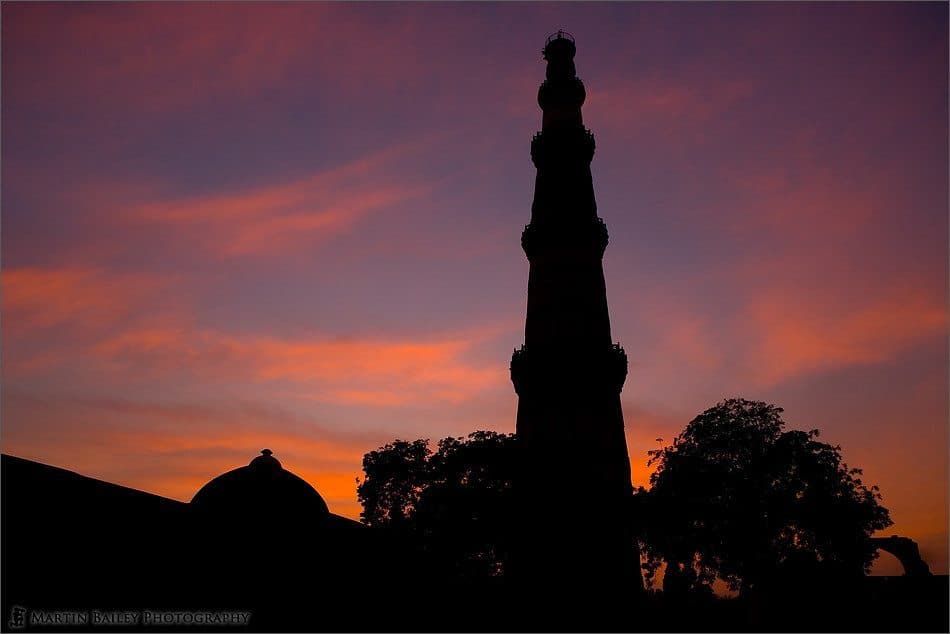
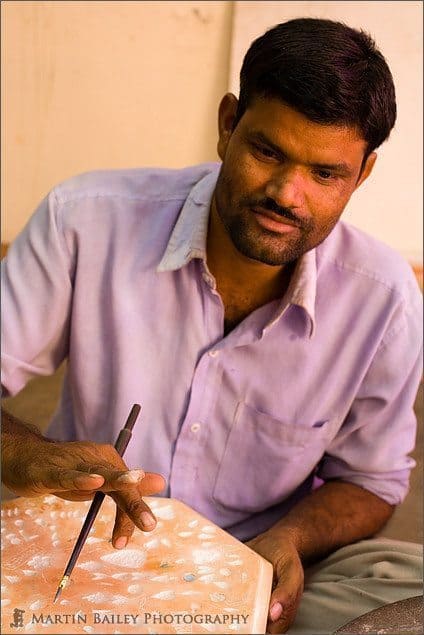
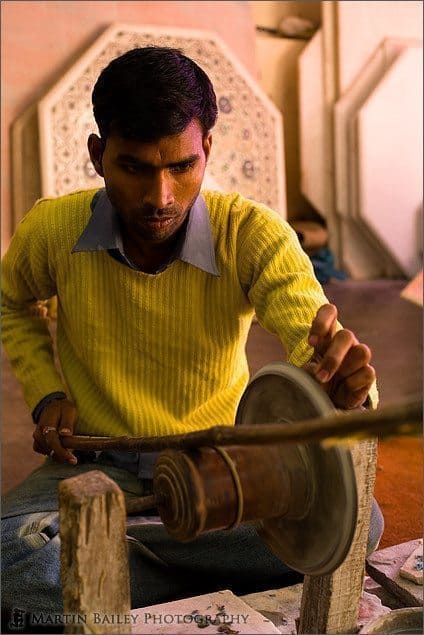

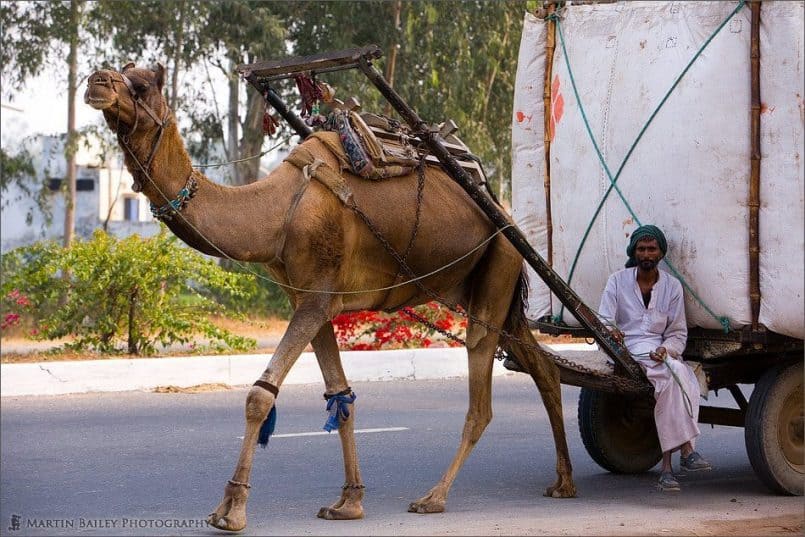
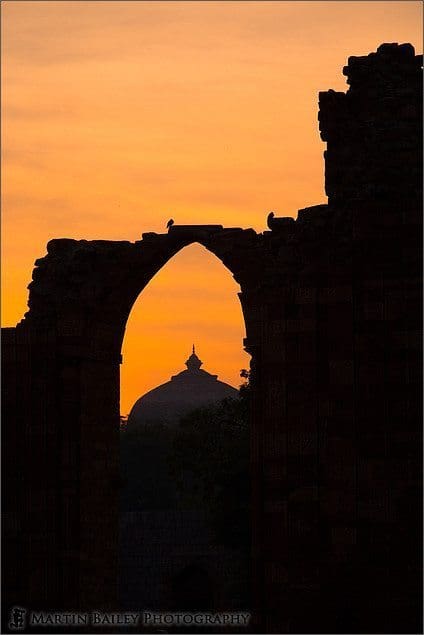
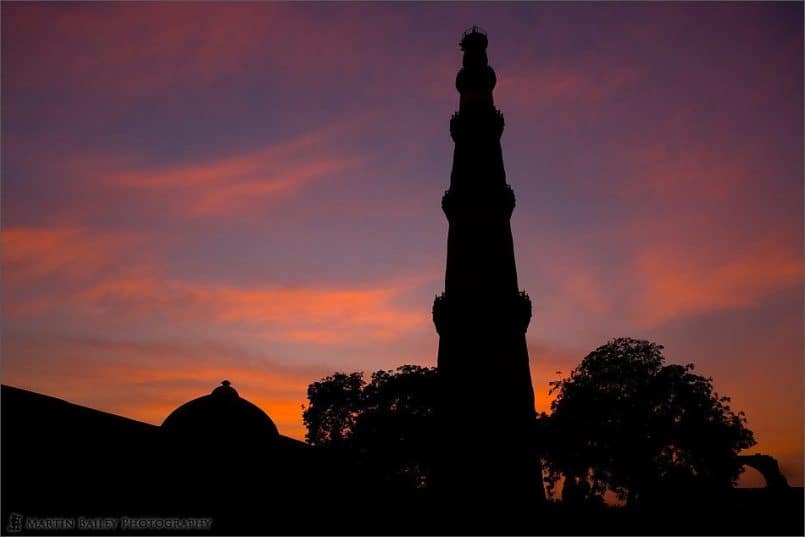

0 Comments